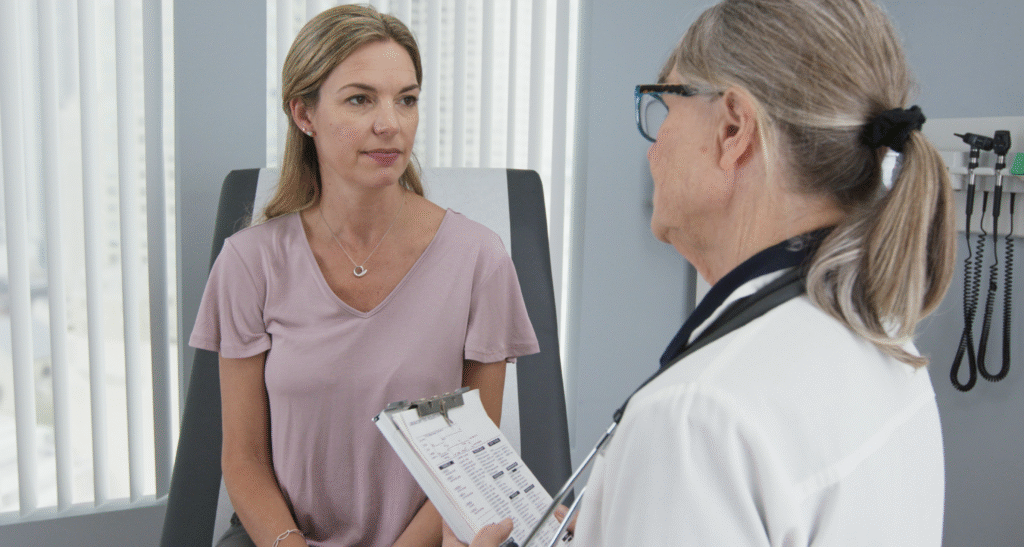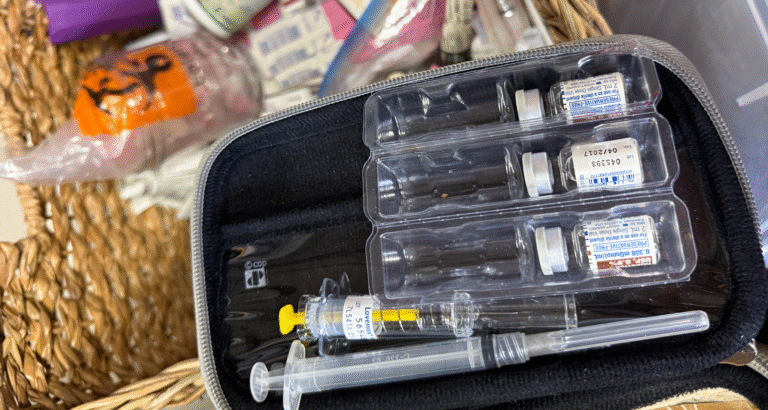If you’ve been diagnosed with Stage 2 endometriosis, the road to get there was probably long and emotional. Most people with endo spend years searching for answers, often getting misdiagnosed or told their pain is “normal.” You may have been dealing with exhausting doctor visits while experiencing disruptive symptoms and a growing sense that something just isn’t right in your body.
Finally getting a diagnosis can feel like a relief, but it also brings a whole new set of questions. What does Stage 2 actually mean? How serious is it? Will it affect your ability to get pregnant? And what are your options now?
We’re here to help you understand what a Stage 2 diagnosis means—and just as importantly, what it doesn’t.
How Many Stages of Endometriosis Are There?
Endometriosis is classified into four stages—Stage 1 (minimal), Stage 2 (mild), Stage 3 (moderate), and Stage 4 (severe)—based on a scoring system developed by the American Society for Reproductive Medicine (ASRM). This system evaluates what a surgeon sees during laparoscopic surgery, including:
- The number and depth of endometrial implants (lesions)
- Their location
- The presence of scar tissue (adhesions)
- The size and number of endometriomas (ovarian cysts caused by endo)
Important reminder: The stage of your endo doesn’t reflect how much pain you’re in or how it impacts your life. It only describes what’s visible during surgery.
People with Stage 2 can have severe, life-altering symptoms. Others with Stage 4 may feel fine. The stage can help doctors make treatment decisions, especially around fertility, but it doesn’t determine how badly endo affects your life.
How Do Doctors Know What Stage You Have?
Imaging (Ultrasound and MRI)
Many doctors begin by listening to your detailed symptom history—pain patterns, period experiences, digestive issues, fertility concerns—and combine that with imaging studies like ultrasound or MRI to look for signs of endometriosis or rule out other conditions.
Early-stage endo (Stages 1 and 2) often doesn’t show up on imaging because the lesions can be small, flat, or located in hard-to-see areas. However, imaging can still offer valuable clues. For example, it can help a doctor evaluate:
- The health and structure of your uterus and ovaries
- Signs of inflammation or cysts
- Whether there’s fluid buildup or organ displacement suggestive of adhesions
In the hands of a skilled endometriosis specialist, your symptoms and imaging results can help build a strong clinical suspicion—even before surgery—so you can begin discussing a personalized treatment plan.
Laparoscopy
The only definitive way to diagnose endometriosis—and determine its stage—is through laparoscopic surgery, a minimally invasive procedure where a surgeon uses a small camera to look directly inside your pelvic cavity. During the procedure, the doctors assess each of the factors included in the ASRM classification system, which helps determine whether the endo is Stage 1, 2, 3, or 4.
What’s the Difference Between Stage 1 and Stage 2 Endometriosis?
Stage 2 is classified as “mild” endometriosis. Compared to Stage 1 (“minimal”), here’s what doctors may observe during laparoscopy:
- A greater number of lesions
- Some deeper infiltration into pelvic tissues (not just surface-level)
- Minor adhesions (scar tissue) may be present
- No large ovarian cysts, which are more typical of Stages 3 and 4
In simple terms, Stage 2 means there’s more endo than in Stage 1, and it may be slightly more invasive—but it still doesn’t necessarily mean symptoms are worse.
Stage 2 Endometriosis Symptoms
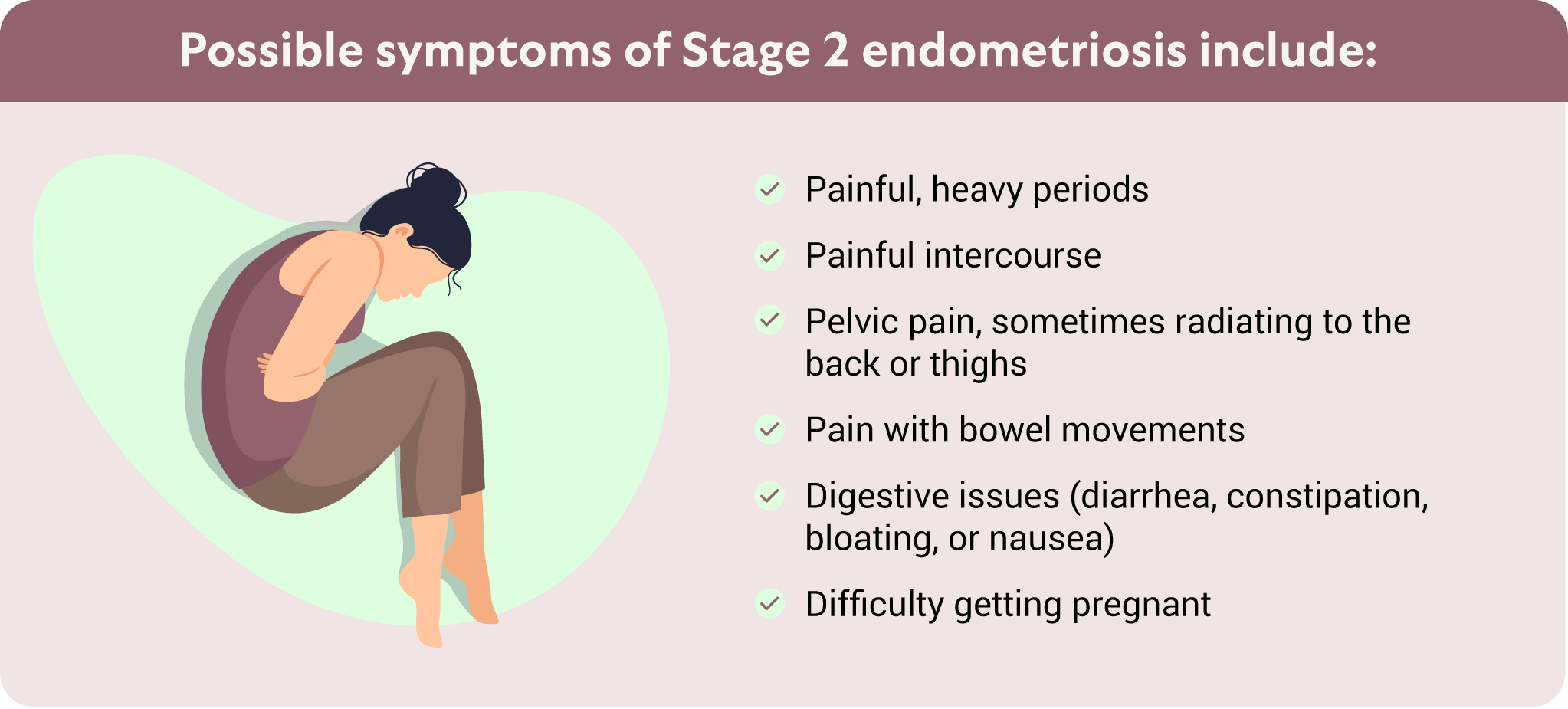
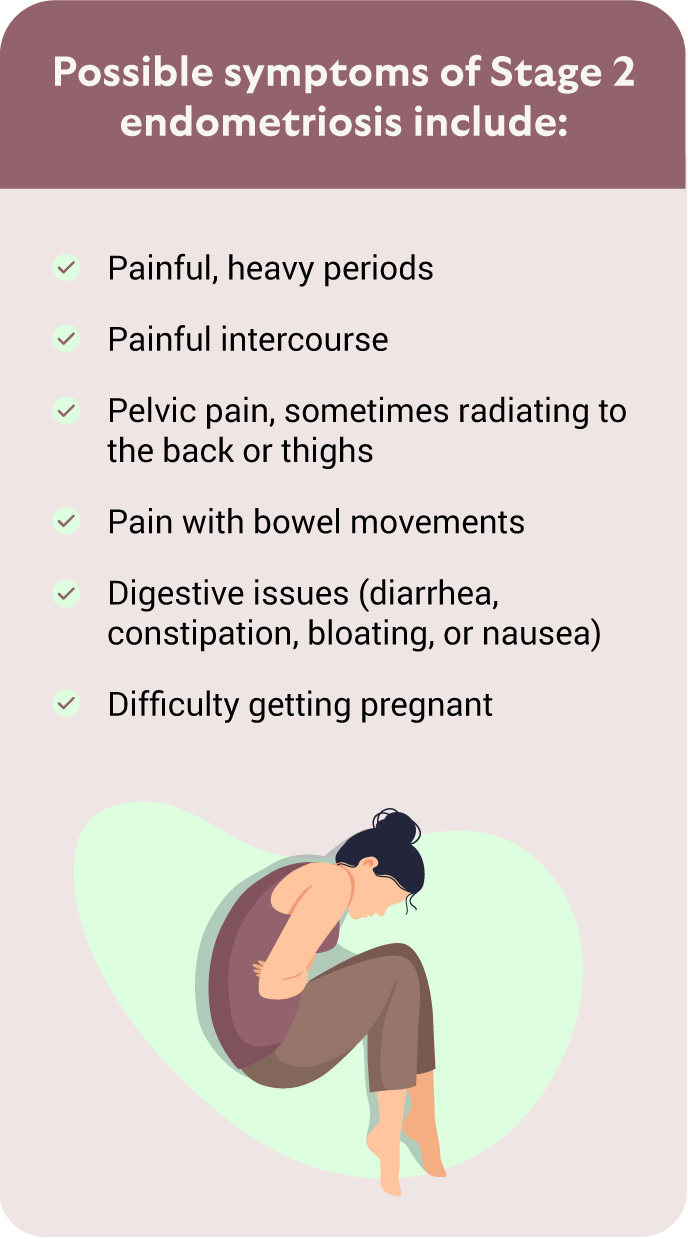
Endometriosis symptoms are frustratingly unpredictable. You might have intense pain with just a few lesions or very mild symptoms with widespread disease. That’s why staging isn’t a reliable measure of your day-to-day experience.
Possible symptoms of Stage 2 endometriosis include:
- Painful, heavy periods
- Painful intercourse
- Pelvic pain, sometimes radiating to the back or thighs
- Pain with bowel movements
- Digestive issues (diarrhea, constipation, bloating, or nausea)
- Fatigue
- Difficulty getting pregnant
If these symptoms are disrupting your quality of life, you are not overreacting—and you are not alone.
How Serious Is Stage 2 Endometriosis?
While Stage 2 is considered “mild” from a surgical standpoint, that label can be misleading. For many patients, symptoms can be just as severe and disruptive as those with later-stage disease. It is serious if it’s affecting your physical, emotional, or reproductive health. And if left untreated, endometriosis can continue to progress over time.
Stage 2 Endometriosis Life Expectancy
For those who have received a diagnosis or suspect one and are panicking, let us be clear: Endometriosis itself does not shorten your life expectancy. (You can exhale now!) But it can dramatically impact your quality of life—physically, emotionally, and socially—if left untreated. Additionally, complications like anemia from heavy bleeding and obstruction of affected organs can cause life-threatening problems in rare, severe cases. That’s why proper care and support matter.
Stage 2 Endometriosis Infertility: Is It Common?
Infertility is less common in Stage 2 than in Stages 3 or 4, but it’s not rare. Even small lesions can trigger an inflammatory response that disrupts your reproductive system. The good news is that, with timely treatment—including excision surgery and fertility support—many patients with Stage 2 endo go on to have healthy pregnancies.
Can You Get Pregnant with Stage 2 Endometriosis?
Absolutely. Many people with mild or moderate endometriosis conceive naturally. However, fertility challenges can still arise.
Lesions and inflammation may interfere with:
- Egg quality
- Ovulation
- Sperm transport
- Implantation of a fertilized egg
If you’ve been trying to conceive for six months or more without success, it’s worth talking to a fertility specialist—especially if you have a known or suspected endometriosis diagnosis.
What Are the Treatment Options for Stage 2 Endometriosis?
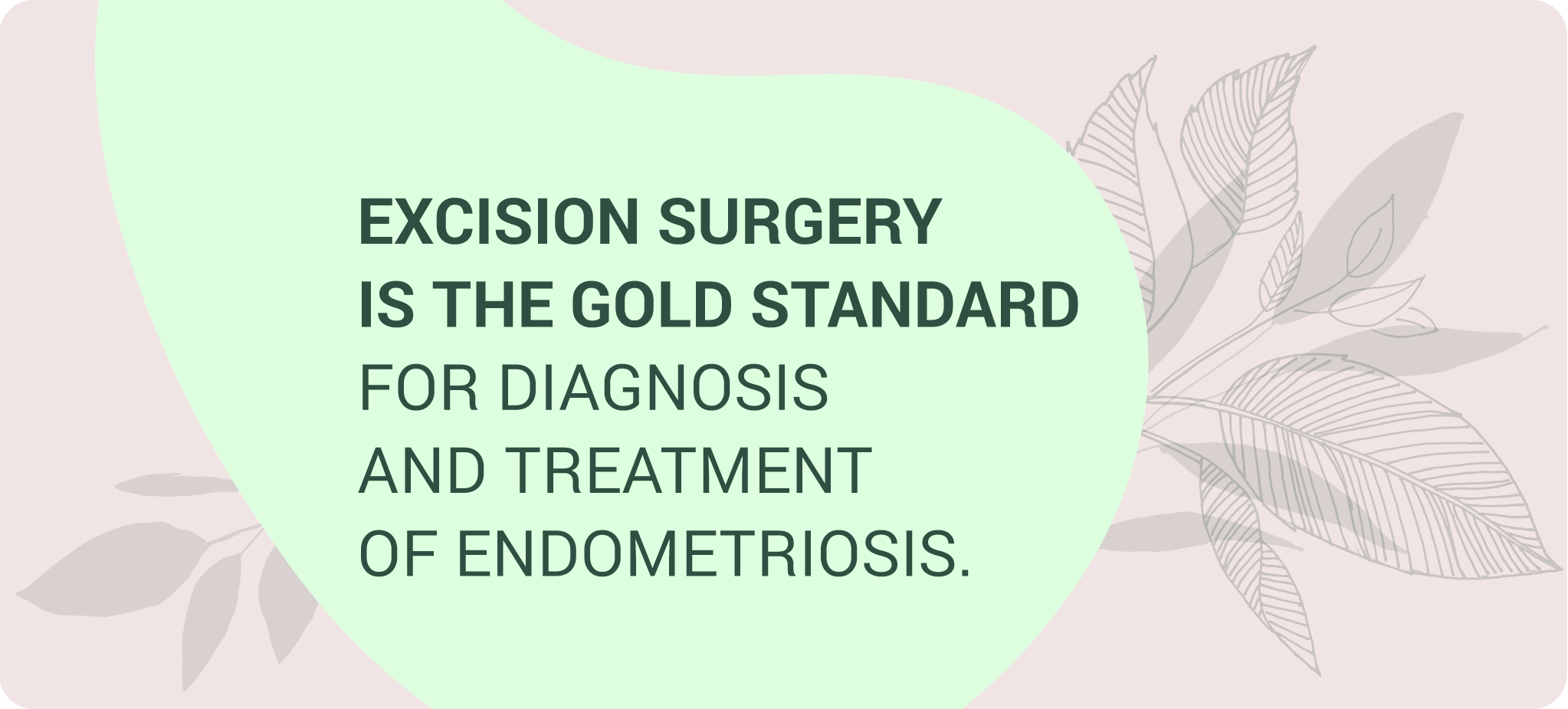
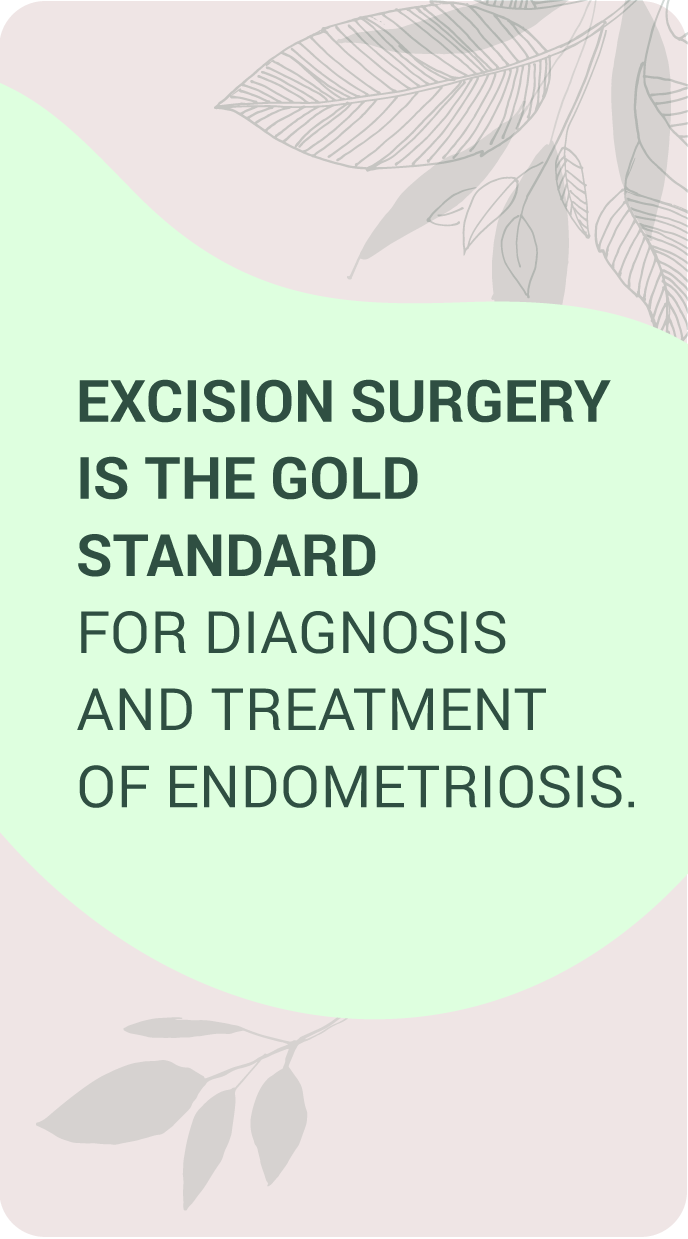
There’s no one-size-fits-all treatment plan. Your care should be as individualized as your experience.
Common stage 2 treatment options include:
- Excision surgery: An endometriosis excision specialist removes endo tissue at its root, not just burning the surface. This is the most effective option for long-term relief and fertility preservation.
- Hormonal therapy: Birth control, progesterone supplements, and other medications can reduce or suppress menstrual cycles to limit endometriosis growth. These don’t remove lesions but may reduce symptoms.
- Pain management and lifestyle support: Anti-inflammatories, physical therapy, acupuncture, nutrition, and mental health care can play key roles in your overall wellness.
At ESSE Care, we work with you to build a plan based on your body, your symptoms, and your goals.
Moving Forward with Stage 2 Endometriosis
Stage 2 endometriosis is real. It’s valid. And it deserves attention—whether you’re in pain, trying to get pregnant, or just want to understand your options.
At ESSE Care, we listen, we believe you, and we’re here to help.
Ready to talk to a specialist who understands what you’re going through? Reach out to our team to schedule a consultation.

